What Are Eaves on a House & The 3 Sub-Types Explained
Author: Rick Worst | Editor: Omar Alonso
Review & Research: Jen Worst & Chris Miller
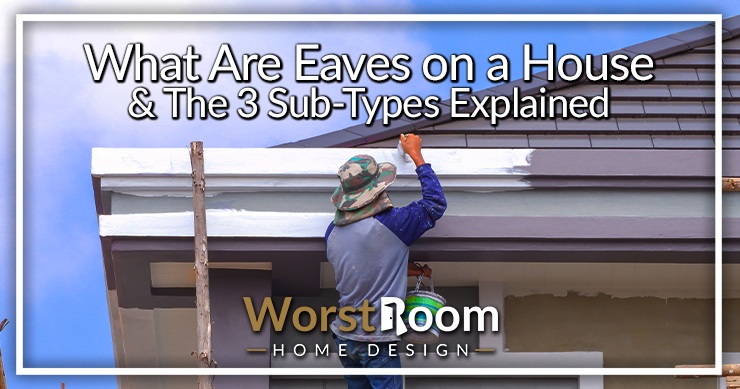
Have you ever wondered about those overhanging edges on a house's roof and their purpose? They're eaves, but what are eaves on a house? These architectural features, known as eaves, play a significant role in preserving your home and enhancing its design.
This blog will explore eaves' components, their various styles, and their importance in protecting against water damage while providing other practical benefits.
Keep reading our cohesive guide to learn about these essential elements that could save your home from costly damages and add an aesthetic charm.
What Are Eaves on a House?
The eaves of a house refer to the edges of the roof that overhang beyond the exterior walls. The lower part of the roof extends horizontally and provides essential protection for the walls, windows, and doors below.
Functionally, eaves provide shelter and help redirect rainwater away from the walls and foundation of the house. Additionally, eaves play a role in managing the sunlight entering the house.
Aesthetically, eaves add visual interest and architectural character to a house. Eaves can be complemented with fascia boards, soffits, and gutters, enhancing their appearance and functionality.
What Are Eaves Made Of?
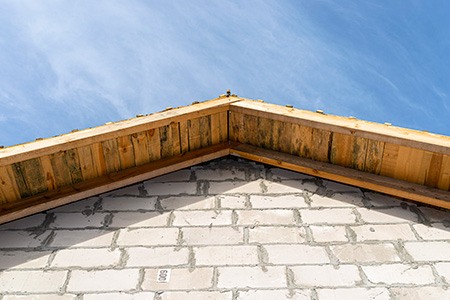
House eaves are typically made of various materials such as wood, metal, or vinyl. Wood is a common choice, offering a traditional and natural look. It can be shaped and customized to match different architectural styles.
Metal, such as aluminum or steel, is known for its durability and low maintenance. It is often used in modern or industrial designs.
Vinyl is a lightweight and cost-effective option that requires minimal upkeep. In the past, I had to hire some roofers in Montgomery County, PA and I told them to just do what they thought was right, and they installed vinyl eaves. I was completely satisfied as it matched the rest of the siding on the house.
The choice of material depends on factors like aesthetics, climate, budget, and personal preferences, with each offering its own set of advantages and considerations.
What Is a Gable?
A gable is the triangular portion of a wall between the edges of a dual-pitched roof. It is formed by the intersection of two roof slopes, commonly found at the ends of a house, and often features a peaked or sloping design.
Different Types of Eaves
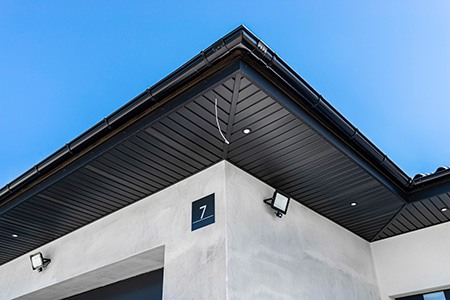
Now that we know what are eaves on a house, the question becomes are there variations on the design? Yes, there are different types of eaves. Common variations include open eaves, boxed eaves, and exposed rafter eaves.
Exposed Eave
An exposed eave is a type of eave design where the ends of the roof rafters are intentionally left visible and uncovered. This feature creates a distinctive architectural feature, showcasing the roof's structural elements and adding a rustic or decorative touch to the overall appearance of the building.
Closed or Sofitted Eave
A closed or soffited eave is a type of design where the area underneath the roof overhang is enclosed or covered with a horizontal surface called a soffit.
This feature creates a clean and finished look, concealing the roof rafters and providing a smooth transition from the exterior walls to the eaves.
Boxed Eave
A boxed-eave is a type of house eave design where the roof rafters are enclosed within a box-like structure.
This design creates a neat and streamlined appearance, with the eaves covered by a horizontal surface that aligns with the walls, giving the roof a squared-off, box-like profile.
Disadvantages of Eaves on a House
House eaves offer advantages, but they come with a few potential drawbacks. Maintenance can be challenging as eaves can accumulate debris, requiring regular cleaning to prevent clogs and water damage.
They may limit natural light, dimming interiors, and increase reliance on artificial lighting. Wide eaves can restrict usable outdoor space near exterior walls. Eaves also shelter pests like birds and insects, leading to unwanted intrusion and potential eave damage.
Also, eaves can pose architectural constraints, making adding extensions or altering the roofline more challenging.
Advantages of Eaves on a House
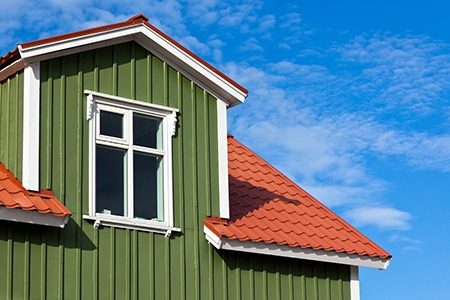
We've answered what are eaves on a house, but are they worth having over other designs? Eaves on the house provide numerous advantages. They offer crucial weather protection, prevent moisture damage, and enhance durability.
Additionally, eaves reduce maintenance efforts by directing rainwater away from the walls, keeping exterior surfaces cleaner with less frequent washing. They also act as a shield for windows and doors, minimizing dirt and debris accumulation.
Moreover, eaves enhance energy efficiency by providing shade, reducing heat gain through windows, and keeping interiors cooler.
Aesthetically, eaves add architectural interest, enhancing curb appeal with various styles that complement the overall design.
Lastly, eaves offer outdoor protection, creating a covered area near exterior walls for shelter from rain or snow when entering or exiting the house.
What Are Eavestroughs?
Eavestroughs, also known as gutters or rain gutters, are channels typically installed along the edges of a roof to collect and redirect rainwater. They are usually made of metal, such as aluminum or steel, but can also be composed of PVC or other materials.
Eavestroughs prevent water damage to the building's foundation, walls, and landscaping. They collect rainwater that runs off the roof and direct it away from the structure.
This process is usually through downspouts, ensuring the water is adequately drained and does not cause erosion, leaks, or flooding in basements or crawl spaces.
What Is a Fascia?
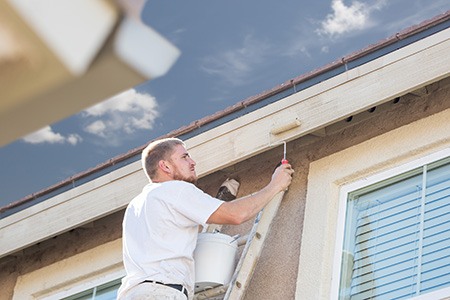
A fascia is a horizontal board typically attached to the roof's edge or the ends of the rafters beneath the eaves. It serves as a protective and decorative element for the exterior of a building. The fascia board is often made of wood, PVC, or metal and is installed along the lower edge of the roofline.
Its primary function is to provide support for the lower edge of the roof, as well as to secure the eavestroughs or gutters.
Additionally, the fascia helps to create a smooth, finished appearance, covering the ends of the roof rafters and providing a visually appealing transition between the roof and the siding or exterior walls.
What Are Soffits?
Soffits are the underside portion of the eaves or roof overhang that extends horizontally from the exterior walls of a building. They are often made of wood, vinyl, or aluminum. Soffits are designed to provide a finished look to the underside of the roof and eaves while also serving critical functional purposes.
They help to ventilate the attic space as a type of roof vent, allowing air to circulate and prevent moisture buildup. Soffits also protect the exposed rafters and insulation from the elements.
They can be customized with vents to enhance airflow and maintain a balanced temperature within the roof structure. If someone asks "what are eaves on a house" they may even be asking about the soffits themselves.
Maintaining & Repairing Eaves
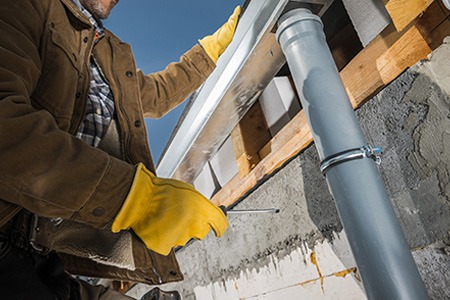
Hiring a professional for repairs or replacement is recommended to ensure structural integrity and maintain the overall aesthetic appeal in case of wear or damage.
Signs of Damage & Wear
It's essential to watch for signs of damage and wear on your home's eaves, which can indicate the need for maintenance or repairs. Some common indicators include cracked or rusted eavestroughs, leaky gutter seams, damaged siding or exterior masonry, and rotting fascia and soffit boards.
These issues not only compromise the overall appearance of your home but can also lead to water damage, erosion, and energy inefficiency.
Regular Cleaning & Inspection
Regular cleaning and inspection are essential to ensure your eaves remain in good condition. Keeping the gutters free of debris is especially important, as clogged drains can cause water to overflow and seep into the foundation, leading to costly damage.
Regular inspection can help catch problems early before they turn into significant issues. For example, if you notice holes in your eaves, it's best to address them immediately to prevent insect infestations or rot from developing.
How to Maintain Eaves
Proper maintenance of eaves at home is essential for their optimal functionality. Regular cleaning is crucial to prevent clogs and ensure efficient water flow. Inspect for any signs of damage, such as cracks or loose components, and repair or replace as needed.
Maintain proper alignment to ensure water flows smoothly without overflowing. Consider installing gutter guards to minimize debris buildup. Monitor the eaves during heavy rainfall to identify any issues promptly.
Lastly, trim nearby trees to prevent branches from damaging or obstructing the eaves. Regular maintenance will help prolong the lifespan of the eaves and protect your home from water-related problems.
Hiring Professionals for Repairs & Replacement
If you notice signs of damage or wear on your eaves, addressing them is essential to avoid more costly repairs. While some minor maintenance tasks can be handled by homeowners, such as regular cleaning and inspection, more extensive repairs and replacements are best left to professionals.
Professional handypersons or roofing contractors can ensure that eaves, fascia, and soffit are appropriately maintained and repaired when necessary. They have the skills and expertise to identify issues and find practical solutions quickly.
For example, if you need a siding replacement or gutter cleaning in addition to repairing your eaves, a handyperson could handle all three tasks during one visit for maximum convenience.
So, What Are Eaves on a House?
In conclusion, eaves of a house are an essential component of a house’s roofline. They not only add to the aesthetic value of a building but also serve practical purposes such as providing shade and protecting against water damage.
A well-maintained eave can improve energy efficiency and preserve the structural integrity of your home. Inspecting and maintaining your eaves regularly for signs of wear or damage is crucial.
If repairs are needed, it’s best to hire professionals who specialize in this area to ensure the safety and longevity of your eaves. So what are eaves on a house? They're the overhang that protects the exterior walls from water, essentially, and help vent heat from the attic.



